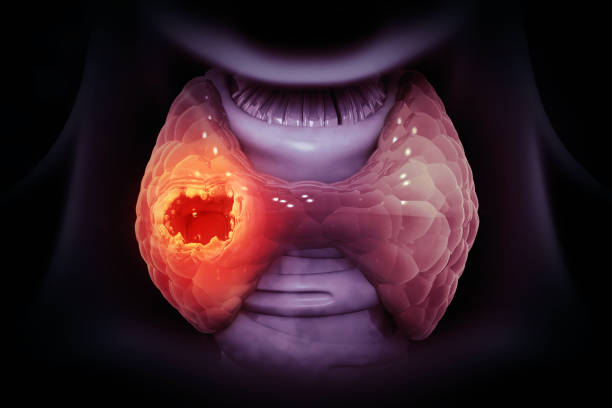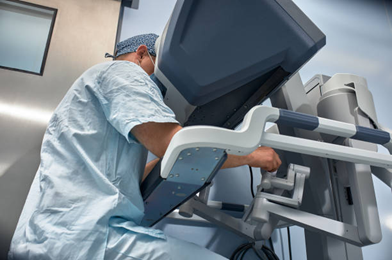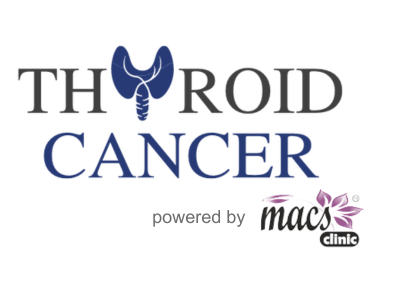Thyroid cancer is one of the most treatable forms of cancer, especially when identified early. It ranks among the more common cancers affecting younger adults, and women are particularly at higher risk. In recent years, increased awareness and improved screening methods have led to a rise in early detection. While most thyroid nodules are benign and non-cancerous, a small percentage can become malignant. Recognizing the warning signs early—and acting on them—can make a significant difference in treatment outcomes.

What often concerns individuals diagnosed with thyroid cancer is not just the disease but also the physical and emotional impact of surgery. Traditional thyroid surgery involves a visible incision at the front of the neck, which can leave a lasting scar. However, modern surgical approaches have transformed the experience for many patients.

“Today, it’s possible to perform thyroid cancer surgery without leaving any visible scar on the neck. Using laparoscopic or robotic techniques, we access the thyroid through the armpit or even the oral cavity. This not only removes the tumor effectively but also ensures a far better cosmetic outcome,” says Dr. Sandeep Nayak, senior surgical oncologist at MACS Clinic, Bangalore.
What Exactly Is Thyroid Cancer?
Thyroid cancer occurs when abnormal cells begin to grow uncontrollably in the thyroid gland—a small, butterfly-shaped gland located at the base of your neck. This gland plays a vital role in regulating metabolism, heart rate, and body temperature by producing hormones.
There are several types of thyroid cancer, including:
- Papillary thyroid cancer (most common, slow-growing)
- Follicular thyroid cancer
- Medullary thyroid cancer
- Anaplastic thyroid cancer (rare but aggressive)
Each type varies in growth rate and spread. While some remain confined to the thyroid gland, others can spread to lymph nodes, lungs, or bones if left untreated.
Here’s why timing makes all the difference.
Why Early Detection Matters

When thyroid cancer is caught early:
- Treatment is often simpler and more effective
- Patients benefit from advanced surgical options like robotic or laparoscopic techniques
- The chance of long-term remission is extremely high
- Cosmetic outcomes improve significantly due to reduced tumor size
Here’s what to watch for.
Common Symptoms of Thyroid Cancer

The early signs of thyroid cancer may be subtle. They include:
- A lump or swelling in the front of the neck
- Persistent hoarseness or voice changes
- Difficulty swallowing
- Pain in the neck or throat
- Swollen lymph nodes in the neck
Not everyone experiences all these symptoms, and sometimes, a neck lump may be the only sign.
Lesser Known or Advanced Symptoms
As the disease progresses, you might notice:
- Breathing difficulty (if the tumor compresses the windpipe)
- Persistent cough not related to a cold
- Pain that radiates to the jaw or ear
- Unintended weight changes or chronic fatigue
If the cancer has spread beyond the thyroid, it can cause symptoms related to other organ, such as the lungs or bones.
Understanding what increases your risk can help with prevention.
Primary Causes & Risk Factors
The exact cause of thyroid cancer remains unclear, but several factors can contribute to its development:
- Radiation exposure: Previous radiation treatments to the neck, especially during childhood
- Family history: Inherited genetic mutations (especially in medullary thyroid cancer)
- Gender: Women are 3 times more likely than men to develop thyroid cancer
- Age: Most common in people aged 30–50
- Iodine deficiency or excess: Both can alter thyroid function
- Benign thyroid conditions: Such as goiter or chronic thyroiditis
Here’s what you can do to reduce your risk.
Can Thyroid Cancer Be Prevented?
While there’s no guaranteed way to prevent it, steps can be taken to reduce risk.
- Avoid unnecessary radiation exposure, especially to the head and neck.
- Ensure balanced iodine intake, particularly in iodine-deficient regions.
- Regular screenings are recommended if you have a family history of thyroid disease.
- Stay alert to new symptoms, especially a new lump or hoarseness.
For genetically linked medullary thyroid cancer, genetic testing and prophylactic surgery may be recommended.
Here’s how it gets confirmed.
How Doctors Diagnose Thyroid Cancer

The process usually includes:
- Physical examination – Checking for lumps, lymph nodes, or tenderness
- Ultrasound – Helps visualize nodules and assess their characteristics
- Fine Needle Aspiration Biopsy (FNAB) – A thin needle removes cells for lab analysis
- Thyroid function tests – To check hormone levels and tumor markers
- CT or MRI scans: If the cancer is suspected to have spread
- Molecular testing: For certain types, like medullary thyroid cancer
Once confirmed, the size, type, and extent of the cancer determine the course of treatment.
Conclusion
Recognizing thyroid cancer symptoms and causes early can make all the difference. With innovations in surgical oncology led by experts like Dr. Sandeep Nayak, patients now have access to advanced, scar-free procedures that prioritize both health and aesthetics.

